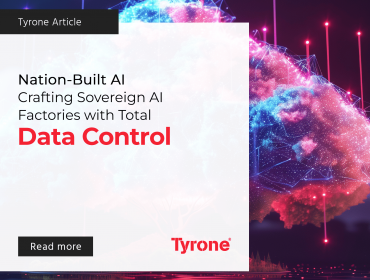In the fast-evolving landscape of technology, High-Performance Computing (HPC) has emerged as a cornerstone for industries and research institutions that require immense computational power to solve complex problems efficiently. The advent of cloud computing has further revolutionized how businesses approach HPC, introducing a paradigm shift in terms of cost-effectiveness, scalability, and accessibility. In this comprehensive exploration, we delve into the economics of HPC on the cloud, unraveling the intricacies that make it a game-changer in the world of computation.
Understanding the Essence of HPC on Cloud
High-Performance Computing involves the use of supercomputers and clusters to process vast amounts of data and perform intricate calculations at speeds far beyond the capabilities of conventional computers. Traditionally, organizations heavily invested in on-premises HPC infrastructure, entailing significant upfront costs for hardware, maintenance, and dedicated personnel. However, the advent of cloud computing has disrupted this model.
Cloud Computing Unleashed
Cloud computing offers a transformative approach to HPC by enabling users to access and utilize powerful computing resources on a pay-as-you-go basis. This dynamic model eliminates the need for massive initial investments, making HPC capabilities accessible to organizations of all sizes. This democratization of HPC is a key factor in its cost-effectiveness on the cloud.
Scalability: The Power to Expand
One of the primary advantages of cloud-based HPC is its unmatched scalability. Traditional HPC infrastructures often faced limitations in scaling up due to physical constraints. Cloud solutions, on the other hand, allow users to scale their computational resources seamlessly based on workload demands. This elasticity not only optimizes resource utilization but also minimizes costs by avoiding over-provisioning.
The Economics Behind HPC on Cloud
Operational Expenditure vs. Capital Expenditure
Embracing HPC on the cloud introduces a shift from capital expenditure (CapEx) to operational expenditure (OpEx). In traditional setups, the bulk of investment went into purchasing and maintaining hardware. Cloud-based HPC mitigates this by offering a subscription-based pricing model. This shift has a profound impact on cash flow, as organizations can allocate resources more flexibly and redirect capital towards innovation and core business activities.
Cost Savings through Resource Utilization
Cloud platforms bring forth a remarkable advantage through optimized resource utilization. Unlike conventional HPC setups that might experience periods of underutilization or idle resources, cloud-based models enable users to pay only for the resources they consume. Dynamic provisioning and de-provisioning of resources translate to cost savings, as organizations aren’t burdened with the overhead of maintaining excess capacity.

The Intersection of Performance and Cost
Performance Efficiency
While the cost-effectiveness of cloud-based HPC is evident, performance remains a critical consideration. Cloud providers offer various instance types, each tailored to specific workloads. Organizations must carefully select instances that align with their computational requirements to strike the right balance between performance and cost.
Spot Instances: Unveiling Cost-Performance Tradeoffs
One innovative cost-saving strategy within cloud-based HPC is the use of spot instances. These instances are available at significantly lower costs but might be interrupted if the cloud provider needs the resources. This introduces an intriguing trade-off between cost and reliability. Spot instances can be leveraged for non-time-sensitive tasks, maximizing cost efficiency without compromising critical workloads’ stability.
Overcoming Challenges and Embracing the Future
Data Security and Compliance
A common concern when migrating HPC workloads to the cloud revolves around data security and compliance. Cloud providers, cognizant of these concerns, offer robust security measures and compliance certifications. While these offerings address most challenges, organizations must still assess their specific regulatory requirements before making the transition.
Hybrid Approaches for Optimization
In some cases, a hybrid approach might offer the best of both worlds. Combining on-premises infrastructure with cloud-based resources can provide the desired performance and cost-effectiveness. This approach, often referred to as “cloud bursting,” allows organizations to seamlessly scale to the cloud during peak workloads while keeping sensitive data and critical workloads on-premises.
The Path Forward: Harnessing Cloud HPC’s Potential
The economics of HPC on the cloud present a compelling narrative for businesses seeking cost-effective solutions without compromising performance. By transitioning from capital-heavy investments to flexible operational expenditures, organizations can strategically allocate resources, drive innovation, and accelerate research and development. While challenges persist, cloud providers’ continued advancements in security, compliance, and performance ensure that the future of HPC is not only bright but also economically sound.

Conclusion-
In conclusion, the realm of High-Performance Computing (HPC) on the cloud has ushered in a new era of computational power, accessibility, and cost-effectiveness. The transformation from traditional on-premises infrastructure to cloud-based solutions has redefined how organizations approach complex computations. The amalgamation of scalable resources, pay-as-you-go models, and a variety of instance types empowers businesses to optimize their computational needs while minimizing costs.











